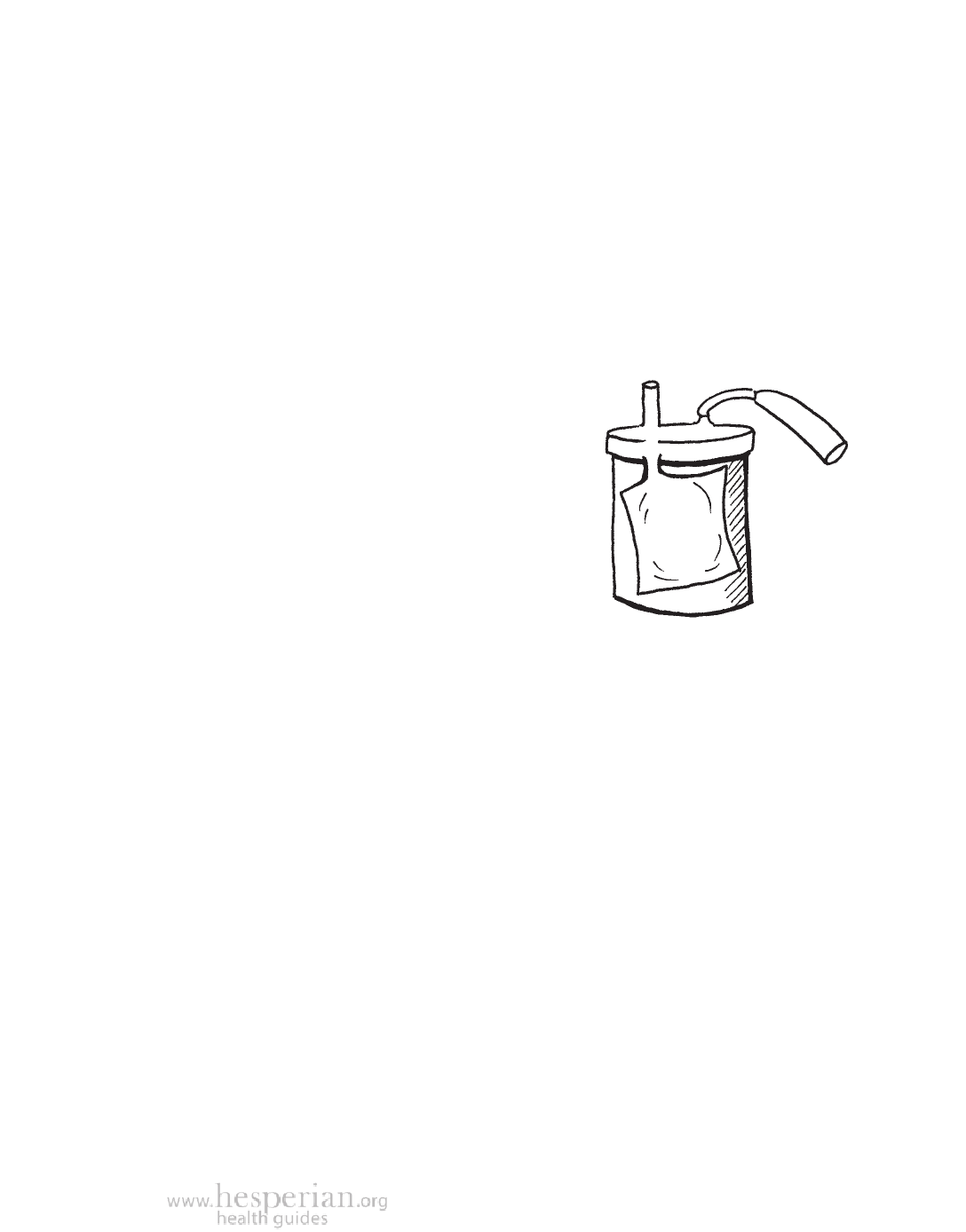
Air Pollution 455
Air pollution monitoring
Air pollution monitoring is a method used by a community during a campaign
against a polluting business or industry. The monitoring allows many people to
participate in the campaign as well as building a base of evidence that can be
used to pressure the companies or industries to stop polluting.
Monitoring or checking for air pollution begins with your senses and your
common sense. To know what effect air pollution is having in your community,
ask people to keep a record of what they smell, see, hear, taste, or feel. The more
people that do this, the better chance the community will have to identify and
stop the pollution.
The bucket brigade method
Some communities monitor the air using a simple,
low-cost method called the “bucket brigade.”
A 5-gallon plastic bucket with a valve and a
special bag are used to take air samples. By
opening the valve when there is a toxic release,
or any time the air seems especially polluted, a
small amount of air is sucked into the bag. The
bag is then removed from the bucket and sent
to a laboratory to find out what chemicals it
contains. (See Resources.)
Having the air sample tested in a laboratory is the most costly part of the
bucket brigade. Most countries do not have laboratories that can — or will —
test the air sample properly, so it may need to be sent to Europe or the United
States. Some communities raise money for a bucket brigade by collecting
door‑to-door, or by holding dances, parties, or house meetings.
Many communities use the bucket brigade along with other community
organizing activities such as interviews and surveys. They also report toxic
releases to the media and government, and try to force refineries and other
polluting industries to use safer equipment and reduce emissions.
A Community Guide to Environmental Health 2012